Students are prioritizing their rights and trailblazing the discussion on the Pledge of Allegiance
Once routine and now what many claim to be a definitive public display of one’s political allegiances, the national pledge of allegiance has proved to be a dividing factor among Americans and more and more recently, high schoolers. And as today’s youths wrestle more and more with such beliefs, we come to find that day by day, they are further questioning aspects of society they might never have been anticipated to have.
It was in 1892 that the pledge was actually published for the first time in a juvenile magazine called “The Youth’s Companion,” which was celebrating the 400th anniversary of the “discovery” of America. A month later, a national committee of educators and community leaders proposed that Columbus Day should call for a recital of some sort in order to honor their country, and it would include adolescents and adults alike. Thus, in October 1892, these very words were spoken in schools across the country: “I pledge allegiance to my Flag and to the Republic for which it stands: one Nation indivisible, with Liberty and Justice for all.”
While controversy has been spurred over the significance of the pledge itself considering dynamics of our country’s history, many also preach that the expression neglects to account for nonreligious persons and consequently undermines their First Amendment rights.
“I don’t stand for the pledge. They say, ‘Separation of church and state,’ yet God is included in the pledge. Now, I’m religious and believe in God but not everyone does, and not everyone is ‘included’ in what the pledge stands for. There are so many other issues such as ‘liberty and justice for all’ and that is a lie,” junior Laura Meyers said.
As revealed in its earliest form, the Pledge of Allegiance never actually included the words ‘under God’ after ‘one nation,’ and was dedicatedly a sentiment to American progress and growth, also meant to enforce values of respect and reverence in young students when proclaimed in schools. Yet, some students are making tough decisions about how exactly to go about the pledge while it entails elements they both cherish and negate.
Senior Alicia Cruz said, “Personally I’ll stand to respect my country, but I won’t put my hand on my heart because I don’t feel the same respect back sometimes. And sometimes my teacher will tell me to do the pledge, but I’ve told her the most I do is stand for it and that’s all.”
On the other hand, many students choose not to question the literal interpretation of the flag, and that it mustn’t be confused with radicalism or forced religion of any kind, but simply is an ode to unity and citizen participation.
“I don’t see a problem,” junior Ani Tumalapalli says. “They did this in India every morning too and it encourages a positive attitude toward the country and its history.”
Similarly, sophomore Maddie Satinover states, “I agree with the pledge because it gives a moment of respect to our country and it is a reminder of how fortunate we are to live in a country that’s free.”
In 1943, the United States government recognized the pledge, but only a year later did the Supreme Court actually rule that the requirement to recite its words violated the First and Fourteenth Amendments, the first protecting students’ liberties of speech and religion, and the latter their privileges and immunities as American citizens. Therefore, since 1943, students have never been required to say the pledge.
But in 1954, things took a turn for what many claim is the worst when President Dwight D. Eisenhower achieves his Congressional request of inserting the words ‘under God’ into the oath. At the time, some state schools, such as those under the West Virginia State Board of Education, would expel students if they did not fully recite the pledge and salute the flag. However, the Supreme Court eventually fought this power of authority.
More recently, government authorities took a significant course of action on Feb. 4 of this year when a sixth-grade student was arrested for his refusal to partake in saying the pledge that day at school. His class was being administered by a substitute teacher who was unfamiliar with the school’s code of conduct stating that no student was legally obligated to stand. After the teacher spoke with the school administration, the student was asked to leave class but upon nonviolent resistance to a police officer, was taken to the nearest juvenile center.
While the student will not receive any records or charges, the public is now arguing that school policy surrounding the pledge is unclear and often unfair, and more light must be shed on this complicated issue of whether or not school districts are truly abiding by federal law. A simple protest of racial discrimination, the student’s actions are majorly deemed as sanctioned while his refusal to stand was relatively undisruptive.
The history of our nation and a wealth of political polarization are incredibly necessary aspects of the dispute surrounding the Pledge of Allegiance. For reasons of personal identity, values, and even laziness, students may choose to or not to stand for and participate in this gesture that has undergone substantial changes over the decades. However, the new generation of youths letting their voices be heard is more inspiring than anything.

Noelle Smagala is a senior, and this is her second year on staff now as social media Editor and website manager of Metea Media. Though she has loved writing...

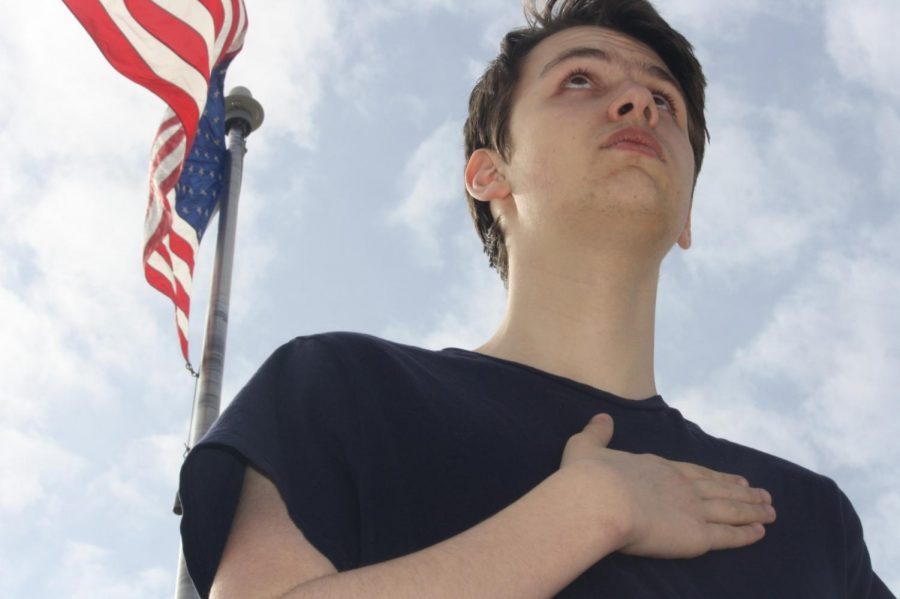
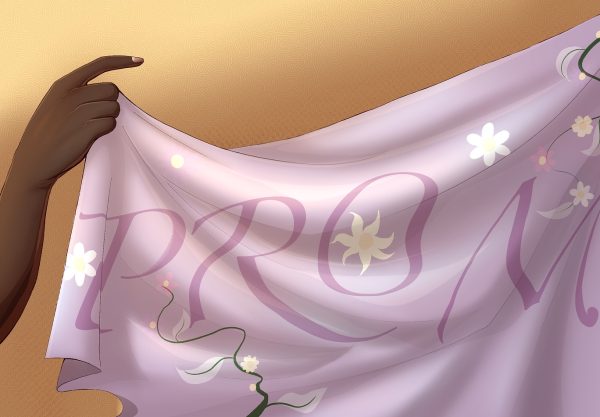
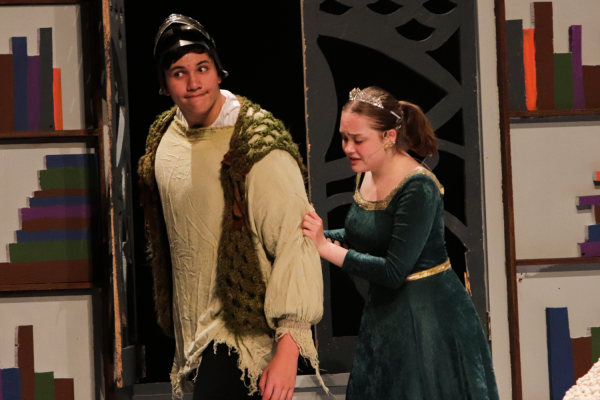

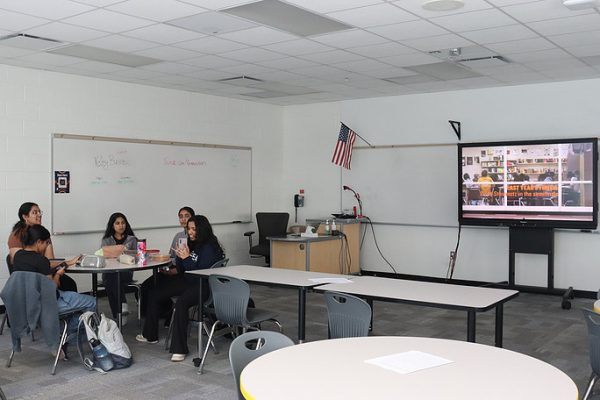




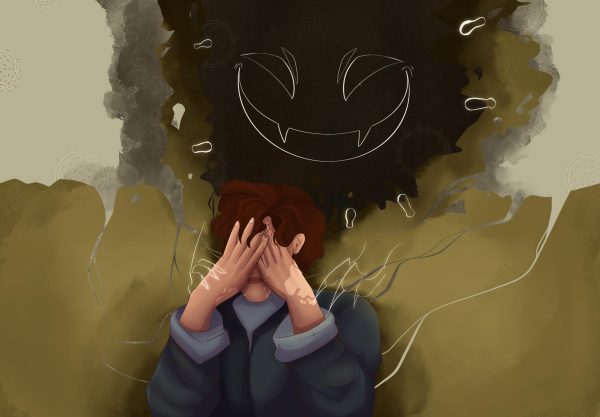
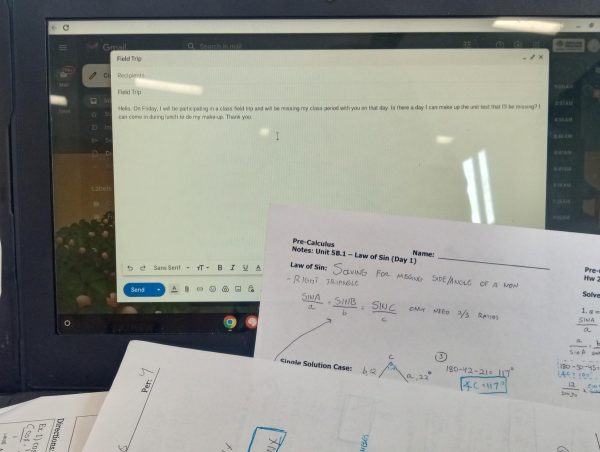
More Concerend Metea Student • May 28, 2019 at 11:36 am
Standing for the pledge or reciting the pledge is a robotic tradition put into place by american nationalists. There’s no reason that we should be forced to “pledge our alleigance” to this country just because we live here. Also, I personally am not religious, so I find it disturbing that we are forced to say “under god”. Our community often prides itselft in our diversity, but how can we all be under god if we have a more diverse religous perspective?
person • Apr 22, 2019 at 10:11 am
A common argument among these comments seems to be that not standing for the pledge of allegiance disrespects the military. To anyone who thinks that, please point out which portion of the pledge pays respect to the military. The pledge of allegiance pays respect to the US flag and to the republic of the United States, which the flag represents. There is no mention of the military in the pledge. I really don’t think anyone believes that those who serve in the military shouldn’t be respected, and we do exactly that on Veteran’s Day. There are so many other ways to respect the military other than saying a couple of words every morning. The biggest problem I have with the pledge is the separation of church and state, as mentioned in the article. The pledge is about paying allegiance to the United States, and allegiance to the United States does not entail holding a certain religious belief.
M.Kay • Apr 12, 2019 at 1:59 pm
I think that those who would like to stand and recite the pledge should do so, but those who do not feel so called may not. There is no right or wrong way of doing it unless it somehow breaks the law (I can’t imagine why it would) or is blatantly disrespectful.
I mean sure, you could totally argue that not reciting the pledge is disrespectful if you feel that way. But, you could also argue that we have free speech and can say or not say what we wish.
Neither one of these ideas is wrong.
What WOULD be disrespectful is maybe cursing the flag or something drastic like that. …not really sure why that would happen, but it’s an extreme example.
~~This is a really cool article and I enjoyed reading it. 🙂
darkstripe • Mar 18, 2019 at 2:00 pm
“You are NOT making a statement when you choose not to stand. Truly all you are doing is making a mockery off your self and disrespecting all those who died so you have everything you do. It is not right to sit for the pledge, and if you think it is, go talk to the millions of families without a father because he died fighting for HIS FAMILY, for YOU, and FOR EVERYONE who walks on our land legally.”
hello there, friend! several things:
1) yourself is one word, not two.
2) capitalizing words does not a stronger argument make.
3) i have several family members who were in the military. i have several family members who died in the military. and you know what they died for on that battlefield? they died for the rights america stands for. and if i’m not mistaken, at the top of the bill of rights stands a little thing called the first amendment. that amendment of course grants us the right to freedom of speech- or the lack of speech thereof- and the freedom to protest. so, think about it this way: isn’t it kind of funny, Concerned Metea Student, that you claim to know what those men and women on the field died for, while at the same time alienating students from exercising their rights of speech and protest, the rights that are considered basic american rights, the rights those men and women died for, under the guise that it’s not what they would have wanted?
y’all funny
ecks dee • Mar 13, 2019 at 9:27 am
Not standing for the pledge isn’t disrespectful to the military. And even if it was, that would only make me want to do it more.
person who agrees with concerned metea student • Mar 12, 2019 at 11:44 am
i agree with concerned metea sutudent
A Concerned Metea Student • Mar 12, 2019 at 9:25 am
You are NOT making a statement when you choose not to stand. Truly all you are doing is making a mockery off your self and disrespecting all those who died so you have everything you do. It is not right to sit for the pledge, and if you think it is, go talk to the millions of families without a father because he died fighting for HIS FAMILY, for YOU, and FOR EVERYONE who walks on our land legally.
meh • Mar 12, 2019 at 7:51 am
All you “Americans” trying to force or shame people for not standing for the pledge need to do a double take about whether you actually believe in American values.
Mikah • Mar 12, 2019 at 7:11 am
I personally always stand and put my hand over my heart for the pledge, but a few years ago when I realized I was atheist I decided to not say the pledge anymore because it takes about our nation being under god. I haven’t really had any issues with teachers because I won’t say it.
me • Mar 11, 2019 at 5:06 pm
There are many reasons why people don’t stand for the pledge, which is one of many said in the article above. I don’t stand up for the pledge anymore after actually analyzing what the pledge says and what it means. The biggest reason for me was the fact that it said “liberty and justice for all,” which is something that is clearly not true in our country. Yes, we are very fortunate and privileged to live in the US because there are so many other people struggling in other countries, but that phrase is still not true as we still see racism and many flaws with the government. People are going to say “it is disrespectful to the military.” The pledge has nothing to do with military, its just another act of nationalism. And also, if we are a “free country” where we supposedly have the right to express ourselves, isn’t it just kind of hypocritical to be upset because people don’t stand up because it is “disrespectful?” Also, someone said “it’s not that big of a deal,” so it shouldn’t be that big of a deal that people don’t stand up. Thank you, next.
darkstripe • Mar 11, 2019 at 1:02 pm
“It truly is disrespectful to the military not to stand for the pledge”
“Stand for the pledge. It is disrespectful not to.”
Alright, so why? I want you to explain how not standing for the pledge is disrespectful, because I sure am confused.
relevant • Mar 11, 2019 at 10:50 am
Typing in all caps doesn’t make a stronger argument
Micah Ho • Mar 11, 2019 at 10:13 am
Stand for the pledge. It is disrespectful not to.
An American • Mar 11, 2019 at 10:11 am
Just stand up, its not that hard and it gives respect to the country
Some Person • Mar 9, 2019 at 8:22 am
THERE’S A REASON WE STAND FOR THE PLEDGE!!! Be a decent human being and just stand up. Stop complaining about it, it’s not that big of a deal. It truly is disrespectful to the military not to stand for the pledge
relevant • Mar 8, 2019 at 4:08 pm
Its important to keep in mind that this country isn’t black or white. It’s not oppressive, but it’s not the divine will of God either.
darkstripe • Mar 8, 2019 at 12:56 pm
this teacher at granger tried to give me detention repeatedly because i wouldn’t stand for the pledge. she kept telling me her reason was because it was “disrespectful to the military”, which doesn’t actually make much sense given there’s nothing about the pledge referring to the military. even thinking about her makes my blood boil honestly. (granger in general was a terrible school. i don’t recommend it.)